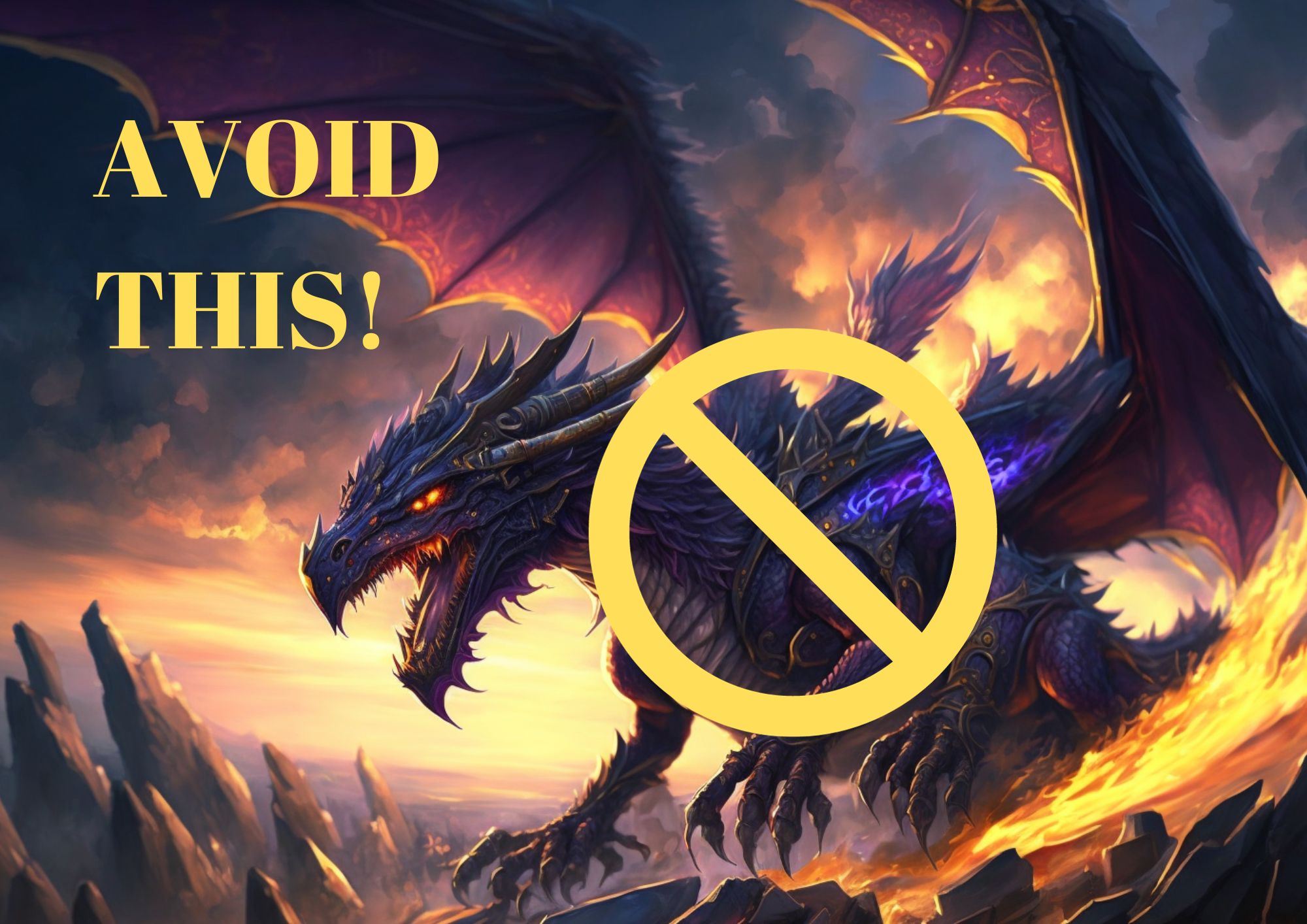
World-building is an art. Done right, it can lead to a story that your readers can connect to and love. Done wrong, and it ends up being simply a distraction that overwhelms your story.
It’s crucial to ensure that your world enhances your narrative rather than overshadowing it. Here, we’ll explore six common mistakes to avoid, helping you strike the right balance in crafting an authentic and engaging fictional world.
1. Losing Sight of the Story
Mistake: Putting so much attention to the various elements of your worldbuilding that you lose focus on the actual core narrative.
The magic of world-building lies in its ability to aid storytelling. However, it’s easy to get carried away with fascinating elements like unique plants, animals, or complex political systems. Always remember that world-building is a tool to enrich your story’s plot, characters, and themes. Ensure coherence between your world, characters, and plot, creating a seamless narrative that couldn’t be easily transplanted into a different setting.
Example: In “The Gutter Prayer” by Gareth Ryder Hanrahan, the dark, alchemical city of Guerdon is integral to the story. The author begins with a chapter narrated from the perspective of a building, highlighting how the city’s spirit intertwines with the plot and characters. The city itself becomes a character, enriching the overall storytelling rather than conflicting with it for the reader’s attention.
2. Starting Too Big
Mistake: Attempting to develop an extensive world from the outset can lead to overwhelming complexity and hinder writing progress.
Embarking on the journey of world-building can be overwhelming, prompting the desire to craft an elaborate, all-encompassing world. However, starting too big can create plot constraints later on and hinder the writing process. Instead, focus on a smaller, manageable lens of your world, delving deeply into specific aspects that align with your story’s theme and characters.
Example: Instead of trying to create an entire world, focus on specific aspects at first and then gradually work your way from there. For instance, in “The Name of the Wind” by Patrick Rothfuss, the author starts by delving deeply into the magic system and the protagonist’s experiences at the University, allowing readers to gradually explore the broader world as the story unfolds.
3. Going Shallow Instead of Deep
Mistake: Spreading your world-building thinly across numerous elements can result in a superficial and less immersive experience for readers.
Attempting to cover every aspect of world-building often results in shallow development. Instead, choose one or two key aspects, like magic systems or geography, and explore them in detail. By going deep into selected elements, you create a more immersive experience for your readers, convincing them of a fully fleshed-out world.
Example: In Brandon Sanderson’s “Mistborn” series, the author prioritizes the in-depth development of the Allomancy magic system. By thoroughly exploring this unique aspect, Sanderson creates a world where magic permeates every facet of life, adding depth and authenticity to the story.
4. Ignoring Consequences
Mistake: Failing to consider the consequences of your world-building choices can lead to inconsistencies and disrupt reader immersion.
Every world-building choice you make has consequences. Overlooking these consequences can weaken the believability of your world. Always consider the ripple effects of your world-building decisions, especially regarding society, ecology, and economy. Addressing the “what if” scenarios enriches your world and enhances its credibility.
Example: In a world where civilization thrives on floating islands, you must address questions like: Where does the food come from? How are resources obtained? In “The Edge Chronicles” by Paul Stewart and Chris Riddell, the authors tackle these issues by introducing sky pirates who plunder resources from the earth beneath the floating cities, adding depth to the world’s ecology and society.
5. Anachronistic Dialogue
Mistake: Using dialogue that feels out of place in your fantasy world can break immersion and authenticity.
Dialogue should be consistent with the era and setting of your fantasy world. Be cautious of anachronistic language or modern idioms that feel out of place. While it’s unnecessary to mimic archaic dialogue, ensure your characters’ speech aligns with the tone and time of your world, promoting immersion and authenticity.
Example: In George R.R. Martin’s “A Song of Ice and Fire” series, the characters’ speech reflects the medieval-inspired setting. Instead of using modern slang, Martin employs dialogue that suits the feudal society, contributing to the world’s believability and consistency.
6. Failing to Find Something New
Mistake: Neglecting to infuse your unique interests and passions into your world-building can result in a world that lacks originality.
If you want your work to stand out, strive for originality by infusing your unique passions, interests, and experiences into your world-building. Seek to innovate and contribute fresh ideas to the fantasy genre.
Example: In “The Lies of Locke Lamora” by Scott Lynch, the author’s fascination with clever heists and intricate plots shines through. Lynch incorporates his passion for con games into the fantasy world, creating a setting where a group of skilled thieves navigates a complex web of politics and schemes, offering readers a fresh take on the genre.
Found the article helpful? Don’t forget to share it with others. Also, join the community and share your work with your fellow creatives
Written by Artnoob100.